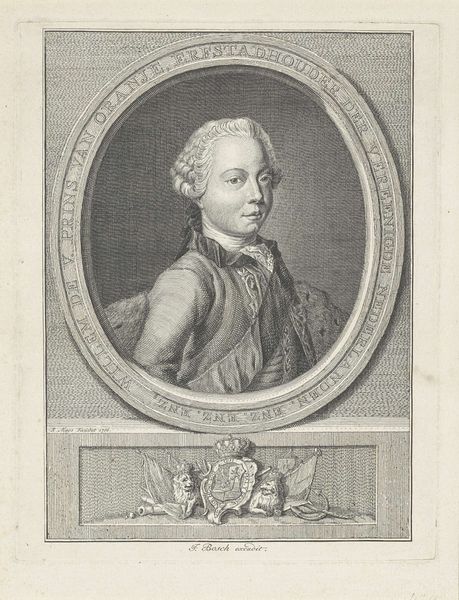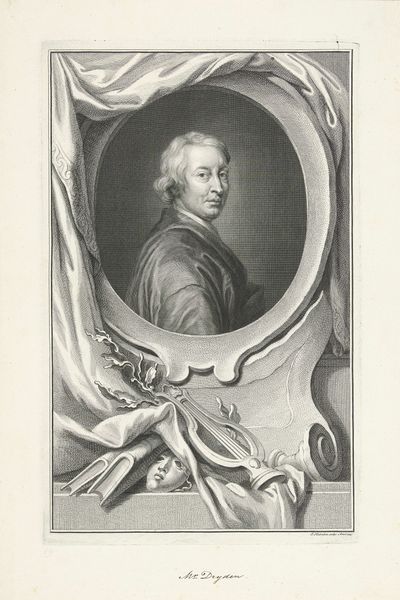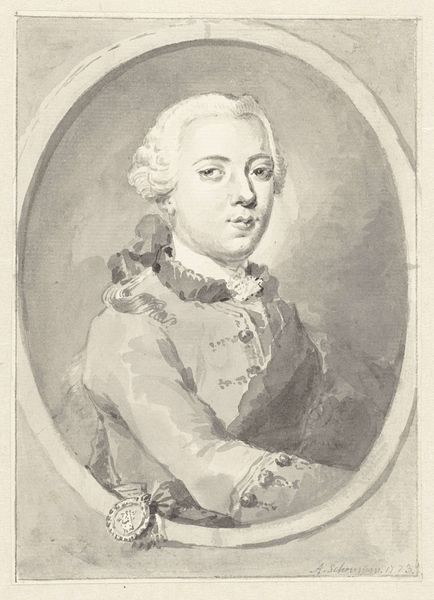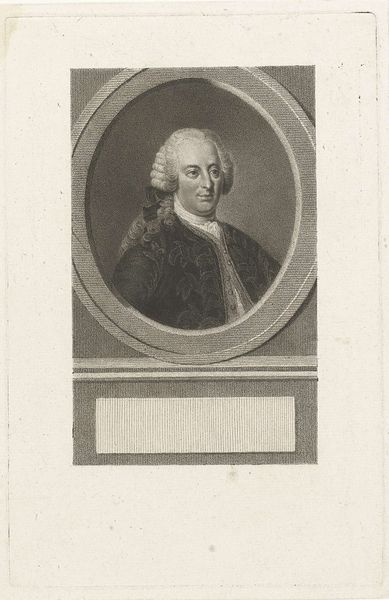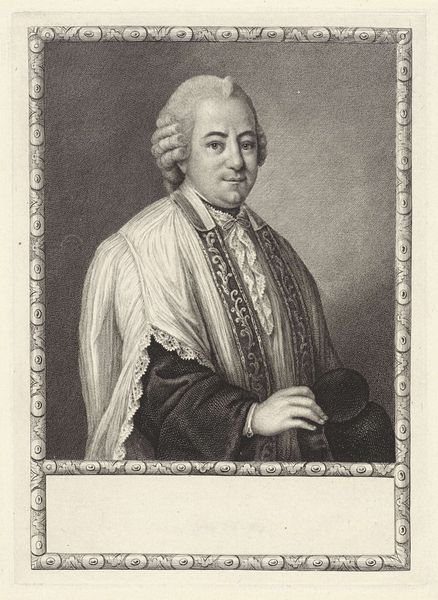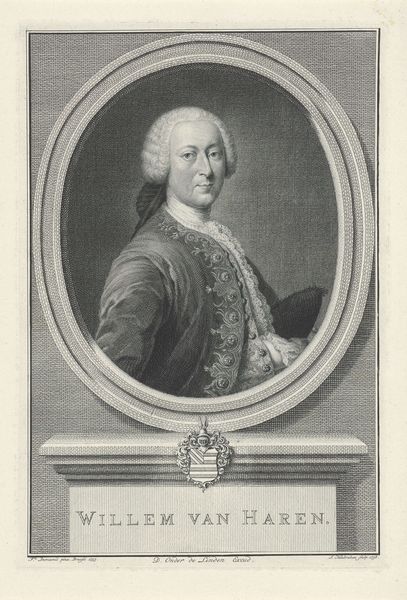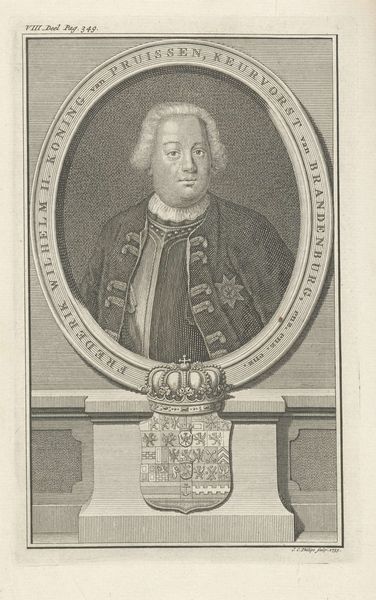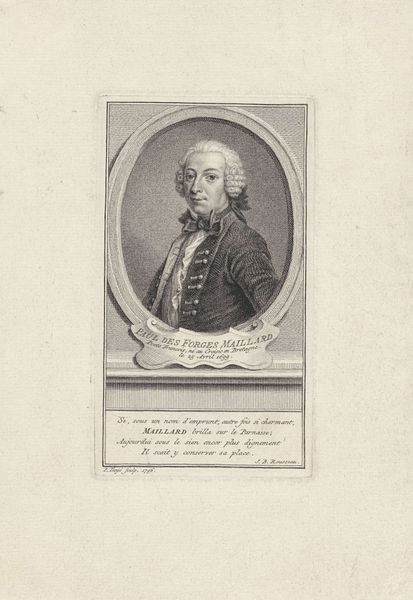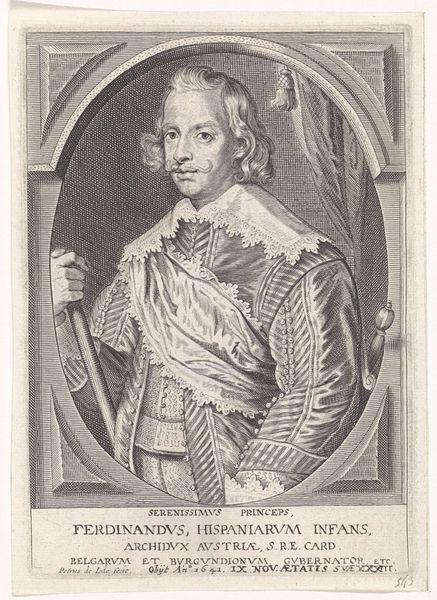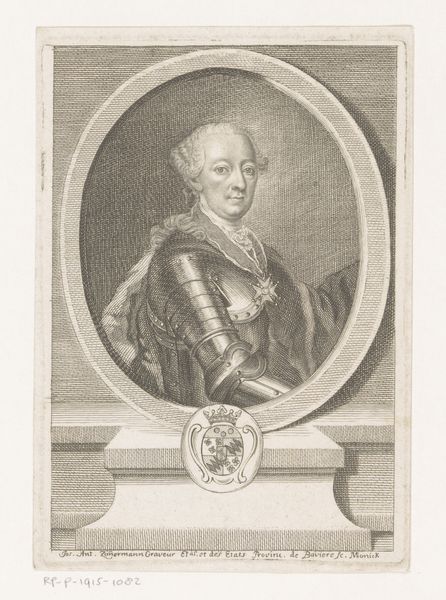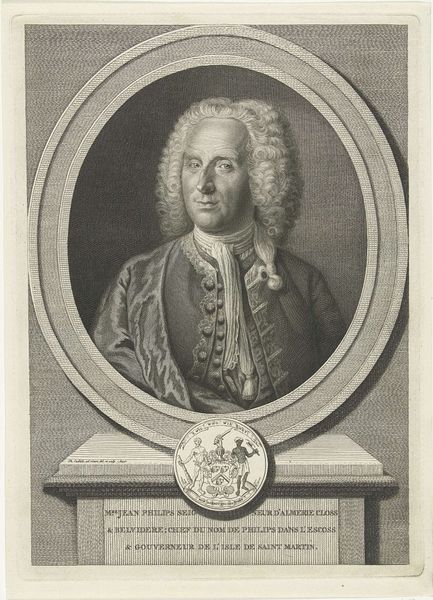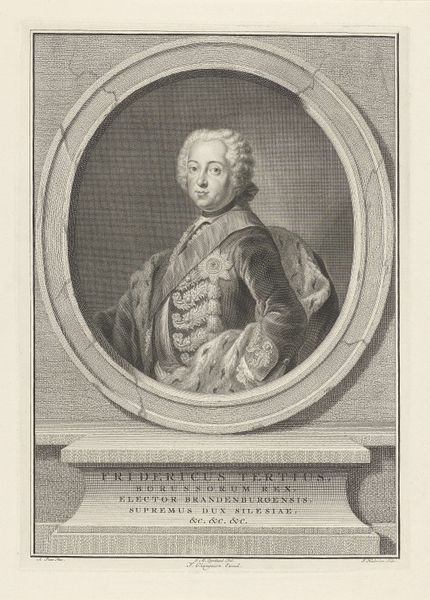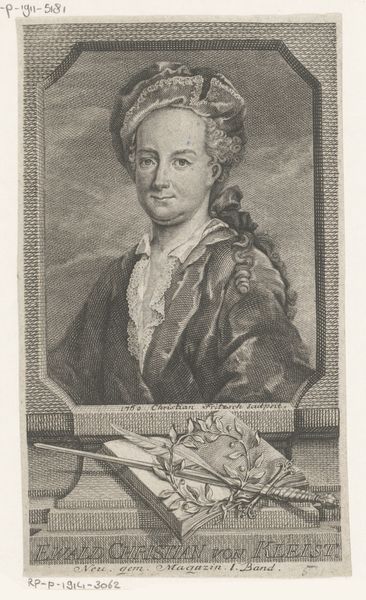
engraving
#
portrait
#
baroque
#
portrait drawing
#
history-painting
#
engraving
Dimensions: height 287 mm, width 221 mm
Copyright: Rijks Museum: Open Domain
Curator: Welcome. We're standing before Jacob Houbraken’s 1735 engraving, "Portret van Matthew Prior," a piece housed here at the Rijksmuseum. Editor: Ah, yes, an intriguing man emerges from that oval frame! He has a knowing glance, almost challenging, with that nonchalant turban. There's an intensity coupled with calm in his eyes. Curator: Precisely! It’s fascinating to consider the labor invested. The meticulous process of engraving would have involved careful carving and the application of ink onto the plate to then create multiple identical images. An engraving allowed for the mass production of this image, thereby democratizing its dissemination, making Prior's image accessible beyond an elite audience. Editor: The materiality enhances this accessibility, truly. You're right, the uniformity across each impression allows his likeness to circulate like cultural currency! It evokes a feeling of intellectual depth with accessibility - like philosophical insights you find while browsing a quirky bookstore. But looking at the clothing - it speaks volumes too. This is not simple rendering, the fabric drapes perfectly around him, the material itself hints at importance. Curator: I agree. This engraving’s success resided not only in artistic ability but in a culture where such imagery reinforced social standing and fame. Houbraken was very skilled, and that helped to ensure the visual accuracy helped. Editor: He even gets this twinkle in his eye! Tell me, does knowing how his image got distributed enhance our experience with the engraving now? Curator: Absolutely. We see the deliberate social construction. Mass media had to start somewhere. And in its lines and distribution network, one can read subtle claims of cultural power at a particular historical juncture. Editor: What was it that kept an engraver so busy? Was it all portraiture, celebrating society? Curator: Predominantly. A rising mercantile class, desiring a sort of immortalisation... yes! They sought emblems of permanence that paintings traditionally provided for aristocracy. Editor: Well, there's something touching to think that Matthew is here, looking out at us across centuries through so much labour. He would not be here, staring with calm assurance without that labor or careful thought. It brings this man closer to life. Thank you, that brings so much perspective. Curator: A truly perceptive conclusion. Indeed, a study of means of production gives one greater sensitivity towards social narratives imbued into such imagery, isn't it?
Comments
No comments
Be the first to comment and join the conversation on the ultimate creative platform.
